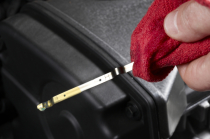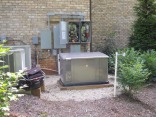
ncgenerators.com
Load Characteristics for Generators
Today's technology has provided a lot of convenience and efficiency. These are good things however sometimes this new technology can add stress to our electrical systems!
For resistive characteristics, typical in most lighting and receptacle loads, the current and voltage sine waves would be in phase and the power factor is not
really an issue, however for newer electronic equipment, air conditioning compressors, pumps, motors or appliances this may not be true. Out of phase current and voltage sine waves
put additional stress on electrical systems by requiring more work by the electrical source to provide the same amount of energy.
Power consumption is the amount of energy that is used. Power factor is a value assigned to the phase angle difference between real or true power and reactive power created by inductive or capacitive loads. Power factors are determined by the percentage of attached load which is either inductive, capacitive, or resistive, how each works against itself, or offset by the other, and the benefits of that struggle. Lower power factor means that our electrical systems are being worked harder, creating higher temperatures to achieve the same amount of work.
Generator systems providing electrical source for attached loads in most cases are designed to handle power factors as low as .8 before additional heat is generated. This heat is energy, lowering efficiency and increasing cost to supply the current output capacity at the engineered voltage output levels of the power source.
It is critical when sizing power systems to take into account the different type loads and how their characteristics will effect the power system. Insufficient sizing of the power system in relation to the attached loads will not only cost more money for operation but also damage loads attached to the power system as well as the system.


